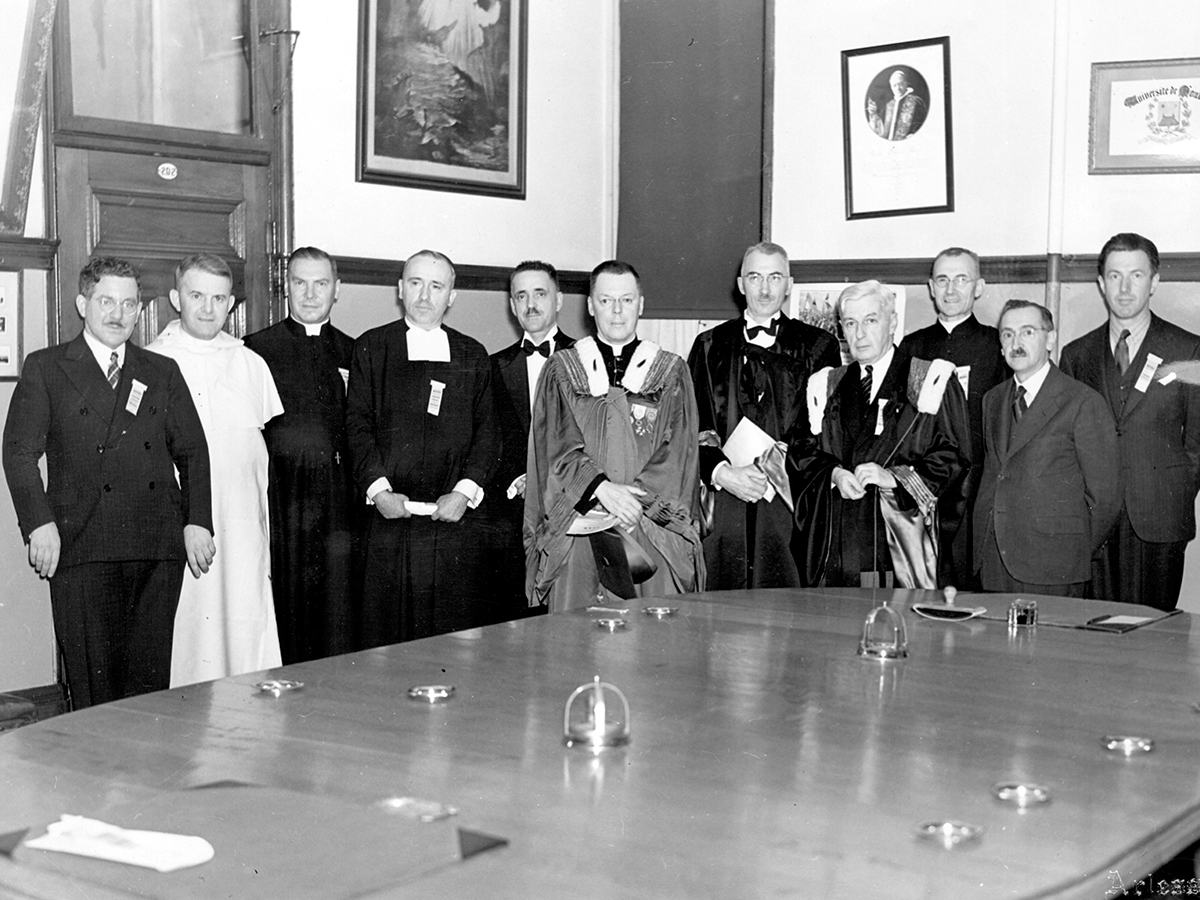The principle task for the European explorers who first visited and then settled New France was to explore the geography of these new lands and to identify the natural resources. What was, to them, a New World had, of course, been occupied for thousands of years by Aboriginal peoples who had accumulated a significant amount of plant and animal knowledge for their own needs. To understand the extent of the knowledge, consider the therapeutic use of the evergreen aneda, well known to the Iroquois, that allowed members of the Jacques Cartier’s ship crew to recover from scurvy during their 1536 winter voyage [1]1Revue d’histoire de l’Amérique française
L’annedda et l’arbre de vie
1954 [2]2Anthropologie et Sociétés
La pharmacopée traditionnelle des Iroquois : une étude ethnohistorique
1978.
During the XVII and XVIII centuries, the Europeans developed a more systematic and organized approach to the collection of knowledge. The Jesuits, for example, recorded their astronomical and botanical observations and circulated them within their vast global network. They identified ginseng which went on to become, in the first half of the eighteenth century, a veritable export industry targeting the China market [3]3Cap-aux-Diamants
Aux XVIIe et XVIIIe siècles : l’exportation de plantes médicinales canadiennes en Europe
1996. Consider also the Jesuit priest Joseph-François Lafitau who published the foundational ethnographic work on the Customs of the American Indians Compared with the Customs of Primitive Times (Mœurs des sauvages amériquains comparées aux mœurs des premiers temps, 1724) [4]4Études littéraires
Lafitau et la pensée ethnologique de son temps
1977.
The French State was equally as active. Not only did it appoint the governors, it also sent Royal Physicians interested in the natural sciences to the colony who regularly reported their discoveries. Michel Sarrazin (1659-1734), for example, the first corresponding member of the Royal Academy of Sciences of Paris, published his observations on the flora and fauna in the Academy’s Mémoires. His successor, Jean-François Gaultier (1708-1756) did the same in the middle of the eighteenth century for geology and plants, such as hemp, that had an economic interest. He even published a treatise on maple syrup [5]5Les Cahiers des Dix
Les origines du sucre d’érable
1990. But it cannot be said that a research tradition had been established despite the creation of the Jesuit College of Quebec in 1635.
The Conquest of 1760 radically transformed these exchanges: henceforth, Canada redirected it attention to England. The nineteenth century saw the birth of institutions in Canada that lay the foundations of an increasingly active scientific community which became better equipped in the second half of the century[6]6Social History / Social History
The Rise and Decline of Science at Quebec, 1824-1844
1997. The Literary and Historical Society of Quebec (1824) and the Natural History Society of Montreal (1827) were sites of scholarly sociability for the bourgeoisie, especially its English Canadian members, who met to discuss natural history, literature and history [7]7Revue d’histoire de l’Amérique française
La société littéraire et historique de Québec (The Literary and Historical Society of Quebec), 1824-1890
1981. Francophones founded the Instituts canadiens, institutions devoted more to history and literature, in Quebec and Montreal in the 1840s [8]8Cap-aux-Diamants
La fondation de l’Institut canadien
1986.
Seeking to stimulate economic and industrial development, in 1842 the Canadian government created its first important scientific institution, the Geological Survey of Canada, followed in 1886 by the federal experimental farms dedicated to the development of practical know-how [9]9Geoscience Canada
William Logan’s History of the Geological Survey of Canada
1999. The creation of journals such as the Canadian Naturalist and Geologist (1857), the Canadian Entomologist (1868), and, the same year, the Naturaliste canadien, the first French-language scientific journal in Canada, indicate that science was now practiced on a more regular basis. While science journals at the time were usually the creation of learned societies, dedicated individuals like the Abbé Léon Provancher (1820-1892) also created journals[10]10HSTC Bulletin
Science et société coloniale : les naturalistes du Canada français et leurs correspondants scientifiques (1860-1900)
1981. As a symbol of national scientific autonomy, in 1882 the Governor General of Canada founded the Royal Society of Canada [11]11HSTC Bulletin
The Dawning of a National Scientific Community in Canada, 1878-1896
1984.
However, it was necessary to wait until the beginning of the twentieth century for scientific research to experience sustained growth and this was closely linked to the growth of the Canadian university network.
The creation of the National Research Council of Canada (CNR) in 1916 finally offered resources to post-graduate teachers and students in all branches of science [12]12Scientia Canadensis
The National Research Council of Canada: Its Historiography, its Chronology, its Bibliography
1991. At the end of the 1920s, NRC developed its own research laboratories in Ottawa. In francophone Quebec, the 1920s saw the development of the University of Montreal (1920) and the first scholarly societies that inaugurated a true scientific movement embodied by the French-Canadian Association for the Advancement of Science (ACFAS); and expressed in Brother Marie-Victorin’s (1885-1944) numerous activities [13]13Recherches sociographiques
Le frère Marie-Victorin et les “petites sciences”
1979. Founded in 1923 and unique in Canada, ACFAS has organized an Annual Congress modeled on the British Association for the Advancement of Science (1831), since 1933. This institutionalization of the various sciences stimulated research and led the NRC to create a new journal, The Canadian Journal of Research in 1929. Biologists at the University of Montreal followed suit and in 1943 created their own journal, the Canadian Journal of Biology [14]14Sociologie et sociétés
Nationalisme et champ scientifique québécois
1975.

After the Second World War and up until the middle of the 1970s, general economic growth fostered the growth of research in all areas. The Canadian scientific community, by then mature, constituted a significant part of the international system of science. Indeed, by the beginning of the twenty -first century, more than half of all Canadian scientific publications were written in international collaboration [15]15Globe
L’évolution des collaborations scientifiques entre le Québec, le Canada et l’Union européenne (1980-2009)
2011.
Translation: Peter Keating


